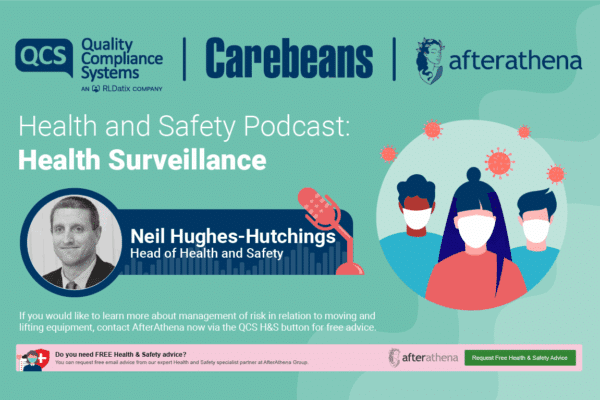Research suggests that a considerable proportion of older people, particularly those in care, are not eating enough protein. Optimising dietary protein intakes among institutionalised individuals may prove challenging, but is particularly important to minimise the debilitating effects associated with deficiency that can have a significant impact on daily life.
Why do we need to be concerned about protein?
Protein is essential for growth and repair and is a fundamental structural and functional element of body cells. It is known to stimulate growth factors that strengthen bone and muscle, as well as increase calcium absorption and so is important for muscle growth as well as both muscle and bone maintenance. Gradual loss of muscle mass naturally occurs with age (a process known as sarcopenia), but can be exacerbated by illness, lack of physical activity and poor diet, including inadequate protein intake. Sarcopenia is an important risk factor for falls in later life.
Dietary protein intake is linked to lean muscle mass in older adults, and studies have shown that older people consuming higher amounts of protein may lose less muscle mass compared to those with lower protein intakes. Current protein recommendations are the same for all adults (0.75g/kg bodyweight/day), but recently there have been calls from a European expert panel for protein recommendations to be increased for older people (to 1.0-1.2g/kg bodyweight/day in healthy older adults and 1.2-1.5g/kg bodyweight/day for older adults who are malnourished or at risk of malnutrition because of acute or chronic illness), to help maintain muscle mass and function in later years. Studies have routinely showed that older adults require more protein to maximise muscle protein synthesis compared to younger adults, indicating that setting higher recommendations may be a wise idea.
Unfortunately protein intake often declines as we age. This may be due to a number of factors including increased satiety (heightened feelings of fullness that subsequently reduce appetite and food intake), dentition/chewing difficulties, and changes in digestion. Because energy requirements are lower amongst older people they need to consume a more protein-dense diet (i.e. more protein per gram of food consumed) to meet their daily needs. This means eating protein rich foods such as lean meats, fish and dairy products at every meal or eating occasion.
Quantity, quality and timing
The amount of protein eaten at each meal and the quality of the protein (the amount of the essential amino acids it contains) may be just as important as the total quantity of protein being consumed each day in order to maximise the benefits in terms of muscle. Animal sources of protein (e.g. meat, fish, eggs and dairy products) have a higher biological value than plant sources as they provide all of the essential amino acids required by the body that it cannot make itself. For the majority of older adults, incorporating a moderate serving of animal-based protein during each meal will help to increase intakes and skeletal muscle protein. Animal sources tend to have a higher proportion of the amino acid leucine which plays a key role in stimulating muscle protein synthesis. Plant-based proteins, such as those found in beans, pulses and cereal grains, are also good choices, but contain fewer of the essential amino acids so it is good to combine different types to meet needs.
Scientific research in the United States has shown that the distribution of protein intake throughout the day might also be important to help maintain muscle mass and function in older adults. Studies suggest that consuming around 25-30g of protein per meal (the equivalent of approximately 2 boiled eggs with toast and a pot of yogurt, a 100g grilled chicken breast, or a baked potato with cheese and baked beans) is optimal to maximise muscle protein synthesis compared to consuming the same quantity of protein unevenly distributed across meals throughout the day. Yet breakfast and snacks can often be comparatively low in protein (providing around 10-12g in total) and consist primarily of carbohydrate-rich foods such as bread and breakfast cereals. Offering a variety of protein-rich foods at breakfast, such as porridge made with milk, eggs, lean meat or fish dishes like kedgeree, or combining a mixture of plant proteins like beans on toast can be good ways to help increase intakes.
Making it achievable
It is important to make sure meals aren’t skipped as this will lead to missed opportunities to consume protein. As protein-rich foods can be filling, little and often might be the way to go – offering small protein-rich snacks, like pâté or cheese spread on toast, a boiled egg, yogurt or a dairy-based drink may be an easier way to encourage higher protein intakes amongst some residents. Physical activity is also really important to maintain muscle mass and should be encouraged as much as possible to preserve muscle function and slow or prevent muscle loss.
Further studies are needed to make explicit recommendations and define more effective feeding strategies, but what we do know is that adequate protein intakes can lead to better health outcomes. Breakfast and snack times represent easy opportunities to improve protein intakes in the elderly population and allow for a more even distribution of protein across the day, which may help to maximise its benefits to muscle, reduce the extent of sarcopenia and the severity of its consequences.
Sarah Alderton, British Nutrition Foundation – Assistant Nutrition Scientist






